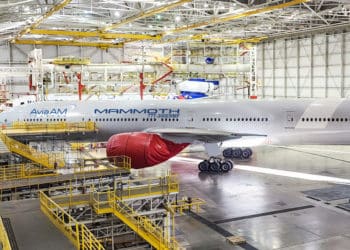Widebody freighter fleet analysis – part III
Today we offer the final section of the 2015 edition of our annual widebody freighter fleet analysis. You can read Part I here, and Part II here.
Part I looked at the overall changes to the structure of the fleet in the last year, and Part II examined the current fleet on a carrier-by-carrier basis. Today we look at some trends that will shape the fleet in the years ahead, starting with the parking of older freighters.
In addition to the currently active freighters shown in the chart in Part II of this analysis, there are a large number in storage. This includes many older types that will never fly again, but also includes some fifty 747-400Fs (both production and converted), over thirty MD-11Fs, and a few A300-600Fs. Many of these could easily be returned to service if required, but Cargo Facts believes that most of them will stay on the ground. Our view may change if the price of fuel stays low for another year, but given the proliferation of belly capacity and the backlog of new freighters that will be delivered over the next few years, it would take more than the current 5% annual growth in air freight demand to bring more than a few of them out of the desert.

In addition to the outstanding orders for production freighters, we know of just three orders for widebody passenger-to-freighter conversion. SF Airlines, the air arm of Chinese express company SF Express placed an order with Boeing for an undisclosed number of 767-300BCF conversions, while EFW received orders from China-based Uni-top for conversion of seven A300-600s and from Egyptair for two A330-200 P-to-Fs. We believe the SF order is for five conversions, and if so, it would bring the total widebody backlog to 134. This is, by far, the smallest widebody order backlog in over a decade. The backlog reached a high point of 309 units in 2007, then gradually fell to 170 in 2011, as deliveries exceeded orders during a period of declining air freight demand. A flurry of orders then boosted the backlog to 236 in 2012, but with very few orders since that point, the backlog has dropped by 102 to its present 127.
This dearth of orders for widebody freighter conversions is a relatively recent development. There are currently available programs for P-to-F conversion of 747-400s (Bedek and Boeing), A330-200s/-300s (EFW), 767-300s (Bedek and Boeing), 767-200s (Bedek), and A300-600s (EFW, Turkish Technic), but other than the fourteen orders mentioned above, Cargo Facts is not aware of any others. The combination of high fuel prices, low air freight demand, and abundant belly capacity has been toxic for the freighter-converted 747-400. Thirty-six of the seventy-nine units converted by Boeing and Bedek have now been put into storage, and it is hard to see any meaningful demand for future conversions. Likewise, the era of P-to-F conversion of 767-200s is almost certainly over, and once the Uni-top A300-600 conversions are redelivered, the same is likely true for that type.
This leaves just two programs that could see orders increasing in the future – the 767-300 and A330-200/-300. P-to-F conversion of 767-300s has been available from Boeing for almost a decade now, and from Bedek (through its M&B joint venture with Mitsui) for six years, but in all that time, less than thirty conversions have been ordered. Feedstock is still plentiful, but as with most medium-widebody freighters, demand for the 767-300 will come primarily from the express operators. Cargo Facts does expect to see more orders over the next few years – SF Express is not the only company looking for more lift in China and Southeast Asia – but how many remains to be seen.
As to the A330, Airbus launched the program though a joint venture with EFW and ST Aerospace three years ago, but so far has announced only the two-unit launch order from Egyptair. Cargo Facts believes that while there may be significant demand for freighter-converted A330s in the future, it will probably be a year or two before that demand starts to ramp up, and when it does, it will likely be for the -300 variant, which is much more suitable for express operation.




